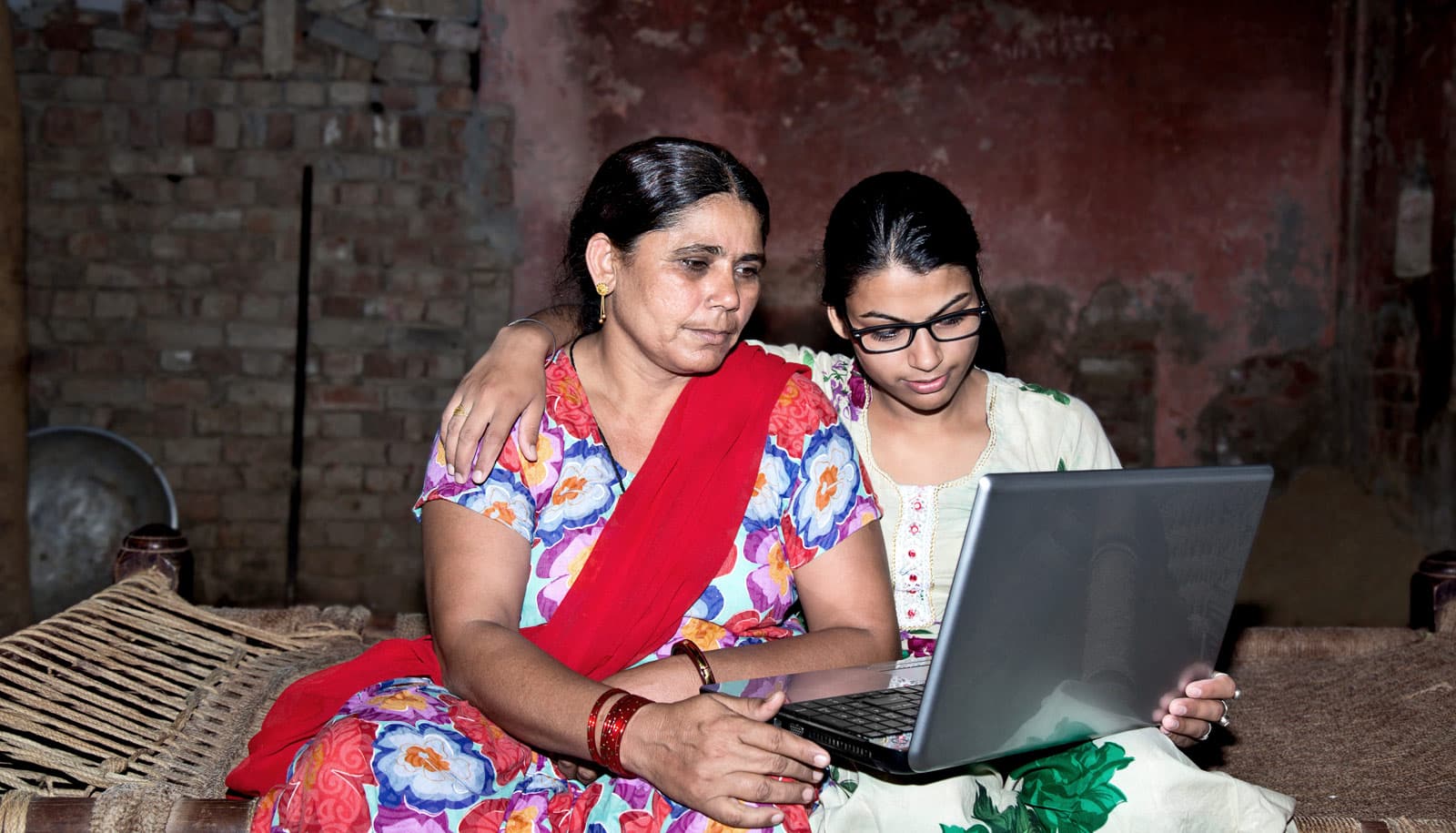As the number of cases of COVID-19 multiplies and the duration of school closures increases, school districts are struggling with the feasibility of providing students with online learning opportunities, researchers say.
In the rush to plan for online education hours, schools must consider equity and the quality of internet access available to their students.
A new report reveals the challenges schools face if they plan to move online:
1) Available data on home internet access is missing.
“We know that there is a serious gap between what official government statistics tell us about broadband availability and the actual experience on the ground,” says Johannes M. Bauer, a professor and director of the Quello Center at Michigan State University.
In an effort to improve on available data, the Quello Center collaborated with Merit Networks and Michigan school districts to conduct a first-of-its-kind study to measure home internet access and school performance. Researchers examined 3,258 students in grades 8-11, distributing in-class, pen-and-paper surveys in 21 predominantly rural Michigan schools, looking at student PSAT and SAT scores and home internet speed test data.
Results showed that the most rural and socioeconomically disadvantaged students are least likely to have broadband internet access at home. Just 47% of students in rural areas have high-speed internet access compared to 77% of those in suburban areas. Of those who do not have home access, 36% live in a home with no computer and 58% live on a farm or other rural setting.
“The only way for school districts to know who has home connectivity is for them to survey parents,” says Keith Hampton, associate director for research at the Quello Center and a professor in the College of Communication Arts and Sciences.
“Asking parents about their internet access and the devices they own can be a difficult subject. It can reveal income inequalities and family choices that not all parents feel comfortable sharing with their child’s teacher. To get reliable information, it is important that schools follow best practices for how they survey parents.”
2) Not all access, or all devices, are equal.
Relying on a smartphone alone for home internet access has as negative an impact on student performance as having no access at all.
The report found that students who rely on a smartphone for internet access at home, those with no access, and those with slower access are less likely to collaborate or seek academic support online from their peers and teachers. It also takes longer for students to complete assignments.
“It is wrong to assume that since most have a smartphone, students have sufficient access,” Bauer says. “It turns out that this is not the case. Those who have only smartphone access perform as poorly as those who have no internet access at all.”
The report found that the students without internet access and those who depend on a smartphone for their only access are half a grade point average below those with fast access. This gap in student performance exists regardless of differences in socioeconomic status. Students who are able to access the internet on their phone struggle to use the resources available on the internet, whether due to slow connectivity, the small interface, or caps on data use from local service providers.
“Students with appropriate devices can still benefit from cell phone hotspots, but interventions need to be implemented with support from local service providers,” Bauer says. “Users may quickly exceed their data allowance and the addition of many new hotspots in a local area can create data bottlenecks on cell phone networks, affecting connectivity for everyone in an area.”
3) Not all students are digital experts… and neither are their teachers or parents.
Students who rely on a smartphone only—or have no home internet access—had a digital skills gap akin to the gap seen between 8th and 11th grade students. Additionally, students with internet access have substantially higher digital skills, which are a strong predictor of performance on pen-and-paper standardized tests, such as the SAT and PSAT exams.
“We found that students with even modestly lower digital skills perform a lot worse on the SATs,” Hampton says. “We measured digital skills on a scale from 0 to 64. The average score was around a 30, but a student who performs modestly lower in digital skills—13 points or one standard deviation—scores about 7 percentiles lower nationally on the SATs. That is true for standardized test scores across all grades, not just the SAT.”
Hampton says that before moving testing online, teachers and schools need to be aware that students who have not had home internet access or exposure to many devices at home will struggle with digital skills.
“Students without home access and those who rely on a smartphone will need considerable additional support to be successful if a school’s curriculum moves online,” Hampton says.
4) There are critical questions to ask parents when delivering online learning.
Parents may be reluctant to reveal information about availability of internet access or devices over the phone to a teacher or school administrator, but most schools have an existing email list that can be used to contact parents with a survey. Send a link to a standard set of questions administered using a web-based form, which is less threatening and makes it easier for parents to reveal accurate information.
Many families without home internet will still have an email address but follow up with phone calls and by mail to fill in the gaps. In some households, English will not be the parents’ primary language, so a student may need to help complete the survey.
Below are best practices and questions the researchers recommend schools use:
Do you have high-speed internet access at home?
Schools need to identify students who do not have fast internet access at home. Students who rely on a smartphone alone will experience significant gaps in performance and will have fewer digital skills. Students in low income situations are more likely to experience instability as a result of the household’s ability to regularly pay for internet and cell phone plans.
Schools need a plan in place to monitor changes in student’s internet access.
What devices do you have at home?
Do students have access to their own computer, laptop, Chromebook, or tablet? Students in households where devices are shared with parents and siblings will have less time to spend online. Identify households that have devices, but the devices do not work, or where they have problems accessing video or other content online.
Students in households with too few devices or too old or inoperable devices will need additional support.
Does your child spend significant time in another home or away from home?
Students who split their time living with parents in multiple households may not have the same level of internet access or access to devices at both locations. Parents may also be struggling to provide childcare during the COVID-19 crisis, students may be spending time in the homes of grandparents, neighbors, babysitters, and in other locations.
Districts need a plan to accommodate changes in students’ daily living situations.
Is someone available to help your child online?
Launching an online curriculum in response to a crisis is not the same as typical online schooling. Highly motivated families are not self-selecting to participate. Parents have varying levels of digital skills and interest in working online with their children. Students in single-parent homes, and those with parents who are still working outside the home, are less likely to have support available to get online and use content.
Do you have the resources you need?
Self-isolating, the need for social distance and the economic challenges of responding to COVID-19 will place many families under increased stress. Online instruction and support, such as video conferencing into the home, may expose teachers to situations that they would not encounter in the classroom, such as evidence of domestic violence and substance abuse. Additionally, digital inequality will become more apparent as a growing number of families cope with the changes facing society during the COVID-19 pandemic, which was declared a national emergency in March.
Teachers should be aware of their responsibilities and the resources available for these situations.
Ensuring that students have sufficient access to the internet and digital devices to continue learning is more important than ever.
Source: Michigan State University



